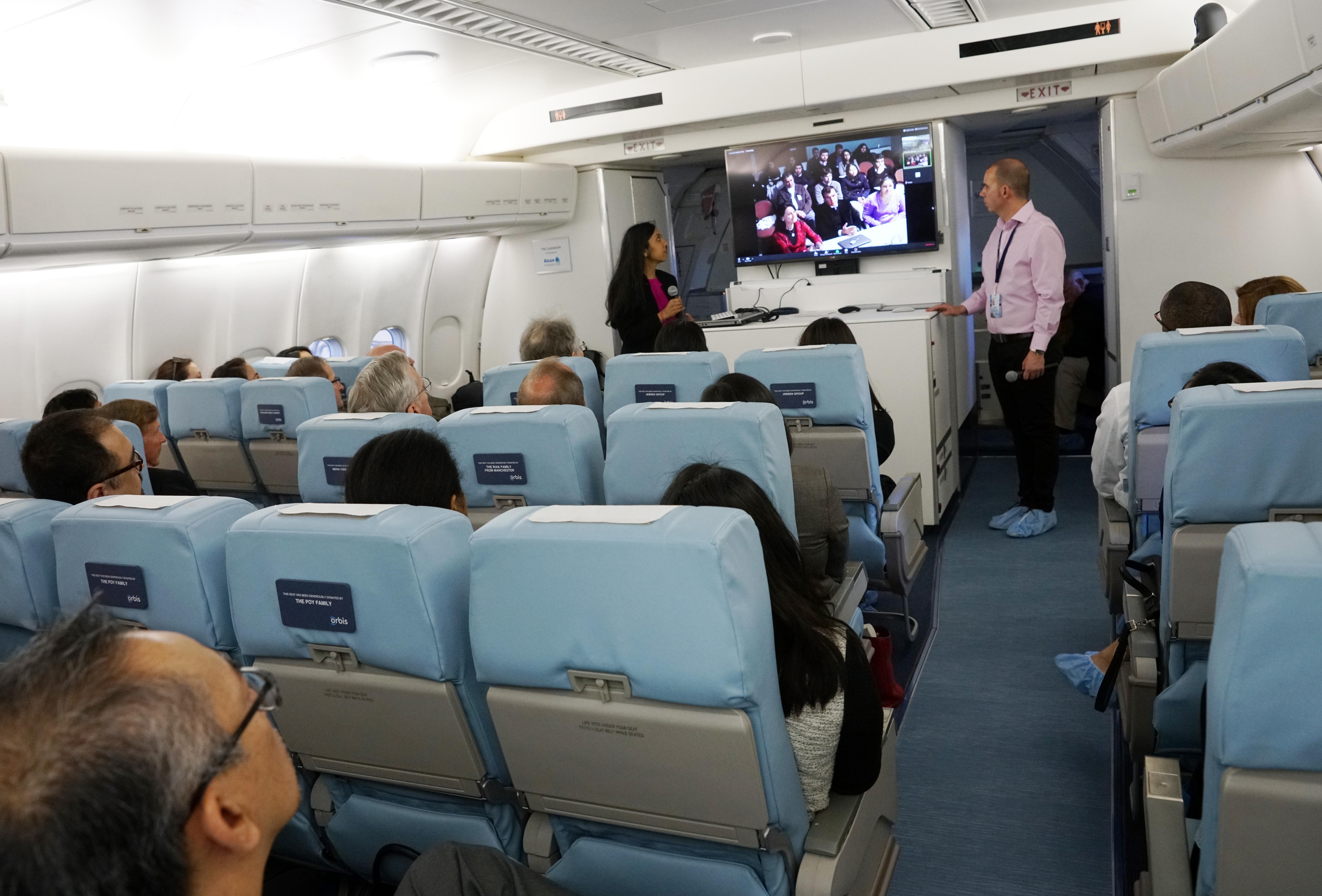
The current third-generation Flying Eye Hospital is an MD-10 cargo aircraft donated to Orbis by FedEx. The aircraft was custom redesigned and fitted with an array of medical equipment using modular technology. The Flying Eye Hospital houses a state-of-the-art teaching facility complete with an operating room, recovery room and a 46-seat classroom where trainees can watch surgeries being performed in the operating room live in 3D.
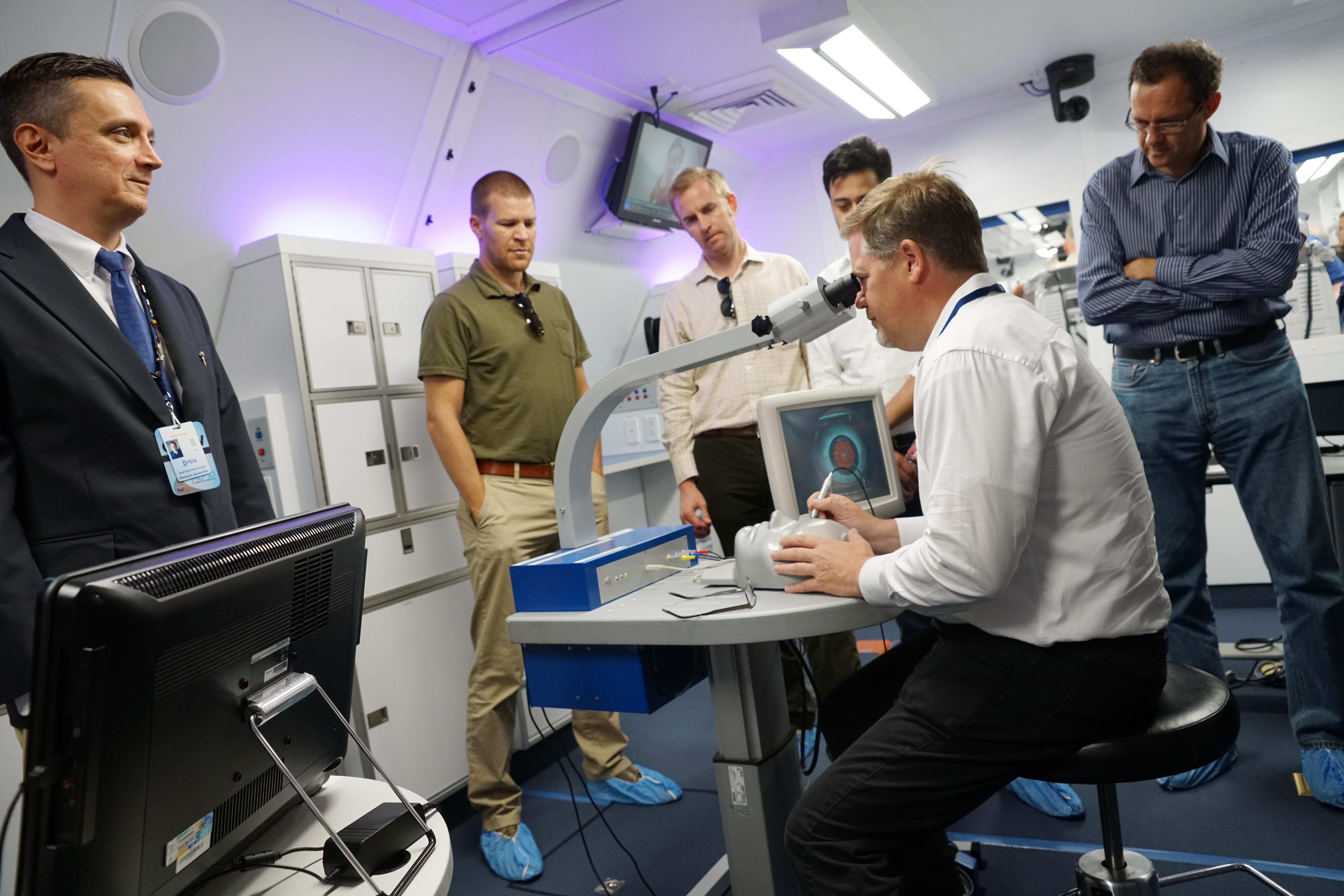
In November 2017, UTC Aerospace Systems announced a $1 million contribution to the Flying Eye Hospital for the development of the world's first Mobile Simulation Center outfitted for an aircraft. The new eye surgery simulation center will enable Orbis to train and deploy volunteer medical professionals while decreasing training costs by 40%, which increases the number of patients that can be served. The center will use virtual reality, artificial eyes, mannequins and cataract and retina simulators to simulate surgical eye procedures and hospital emergencies, which will enable local care providers to learn by performing techniques before treating live patients.
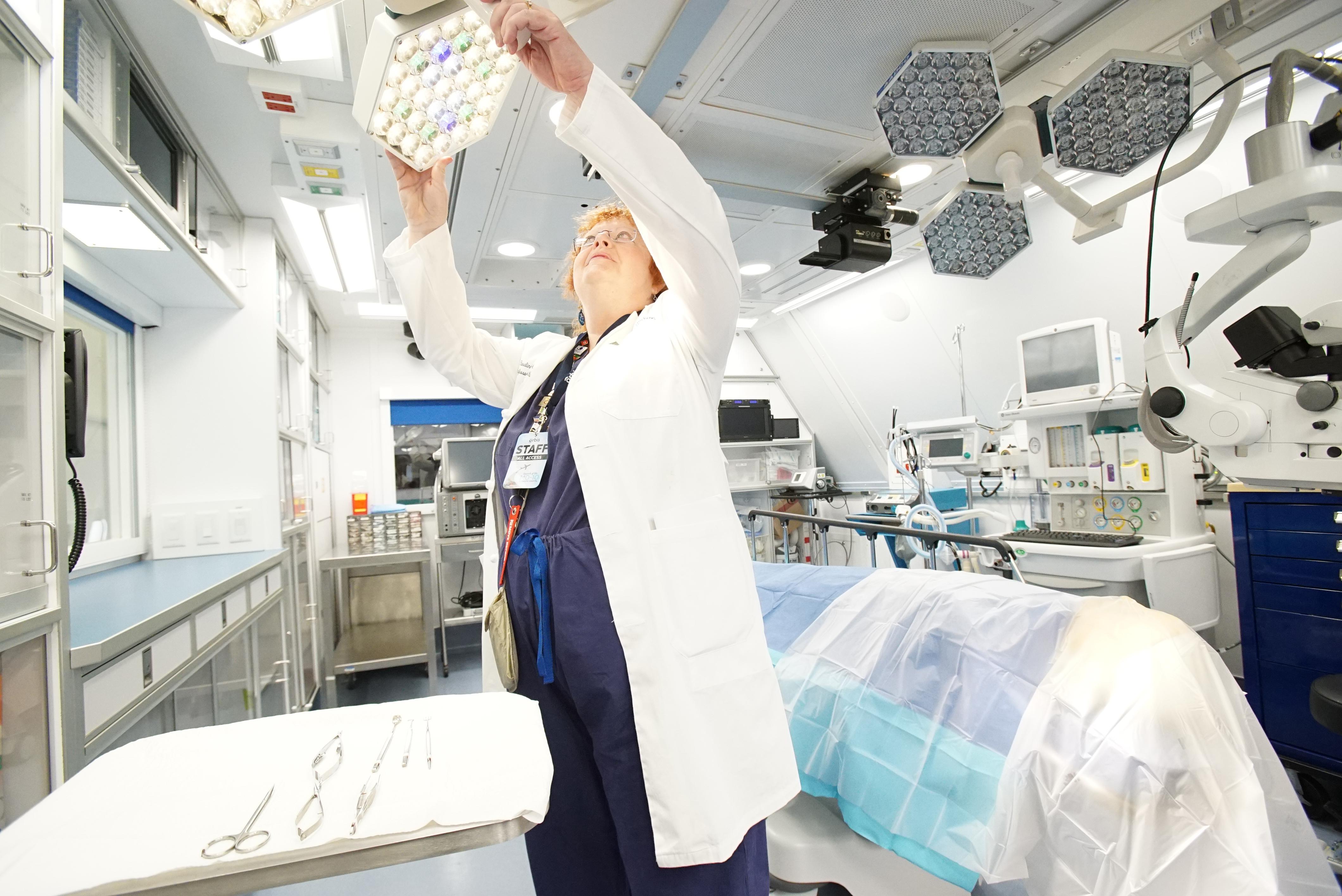
The MD-10 aircraft is entirely self-sufficient, generating its own power, water purification and medical gases. Two custom-made generators, which utilize aircraft fuel, are used to power the aircraft. When in ground mode, the aircraft is powered via the generators, but the APU can be used as a back-up for electrical power in the case both generators fail. Orbis says the hospital critical equipment can run on an uninterrupted power source if necessary.
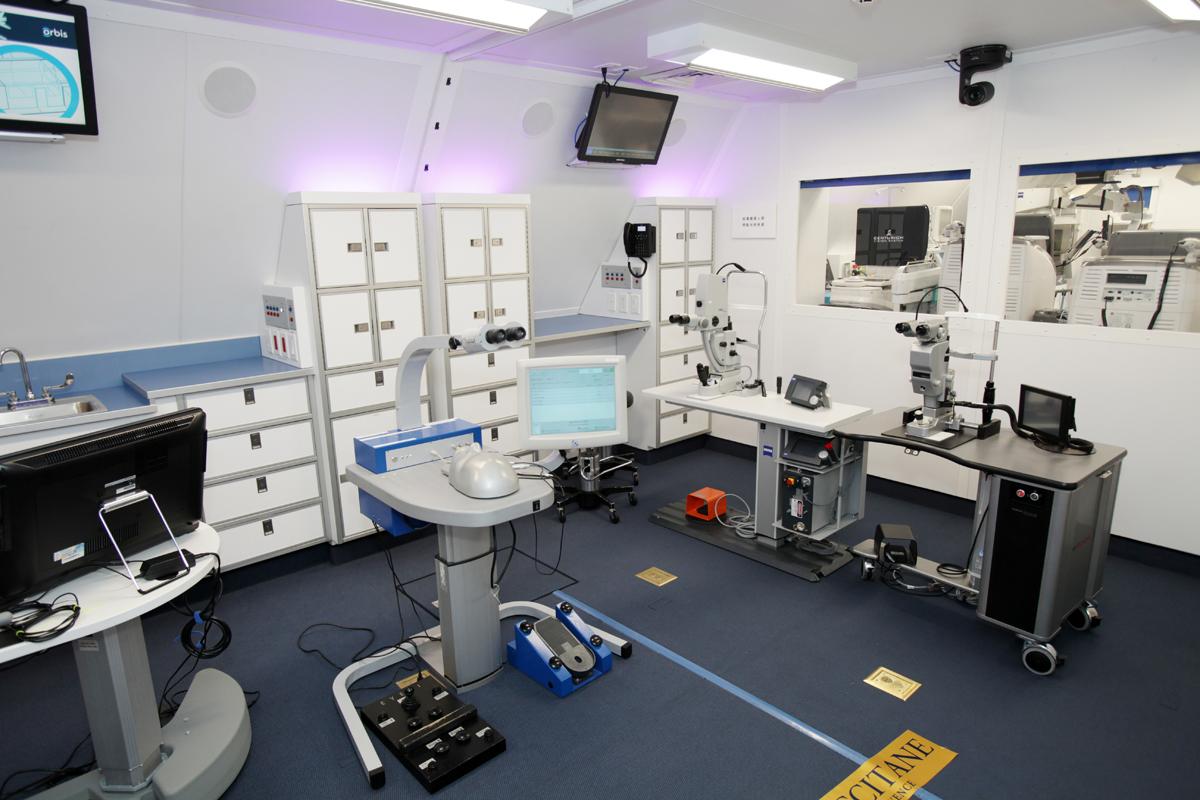
To comply with high-purity requirements for some of the equipment, the Flying Eye Hospital is equipped with water tanks of up to 378 US gallons, which are purified using a bank of filters, a brominator and a recirculating UV light system. Additionally, a point of use UV filter was installed for the scrub sink and a reverse osmosis water system is used in the instrument sterilization room. The hospital central monitoring system continuously oversees water quantity and quality during hospital operation.
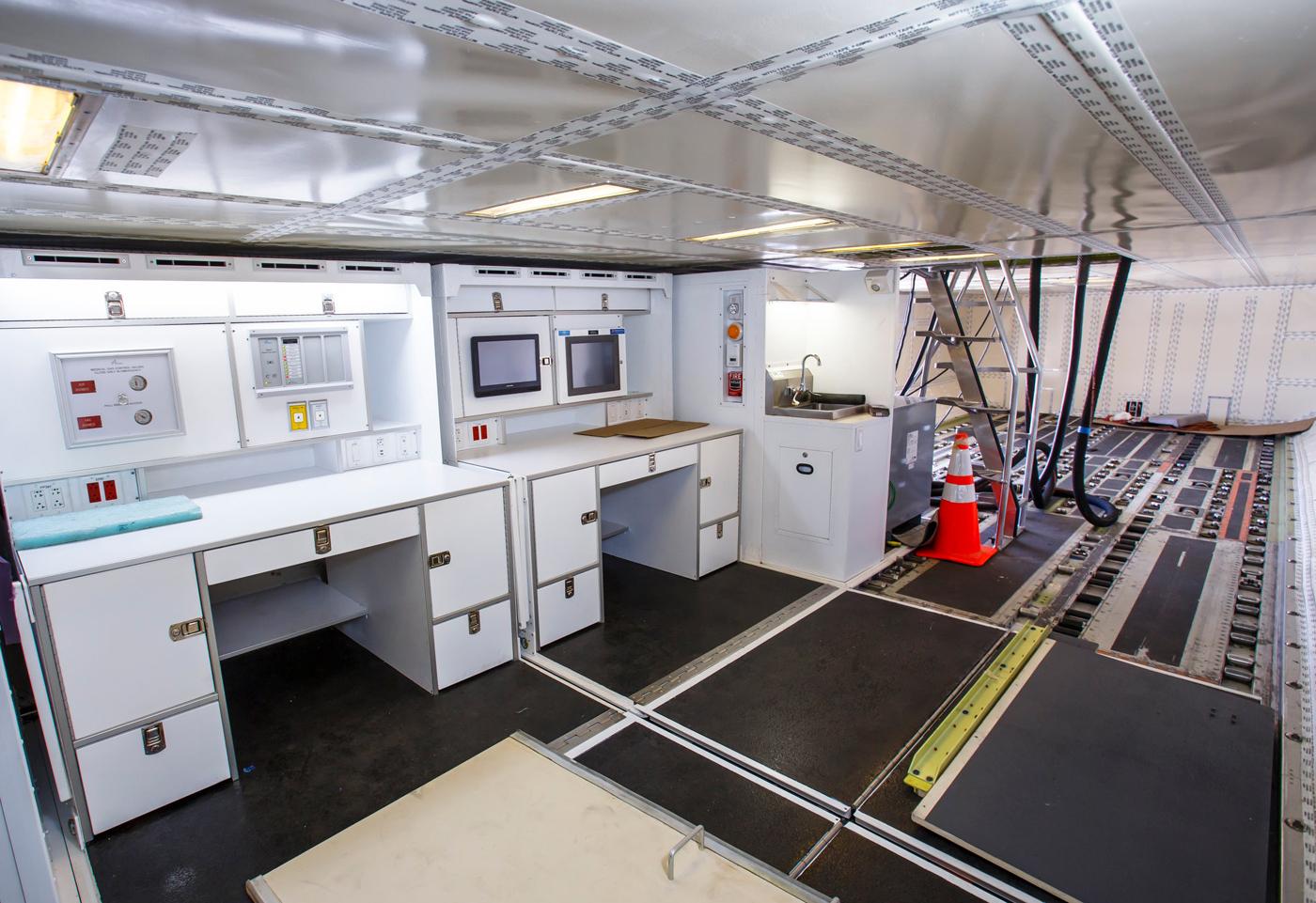
Surgeries and training programs are only conducted on the ground while the aircraft is set up in hospital mode. Fragile ophthalmic equipment is packed into padded modules for flight, which Orbis secures to the floor or stores in cargo compartments.

Over the past 36 years, Orbis has worked with various MROs including FedEx, Alienia Aerospace, Marana Aerospace, and ST Aerospace Mobile, San Antonio and Singapore. Most recently, the company joined forces with AerSale for aircraft maintenance.
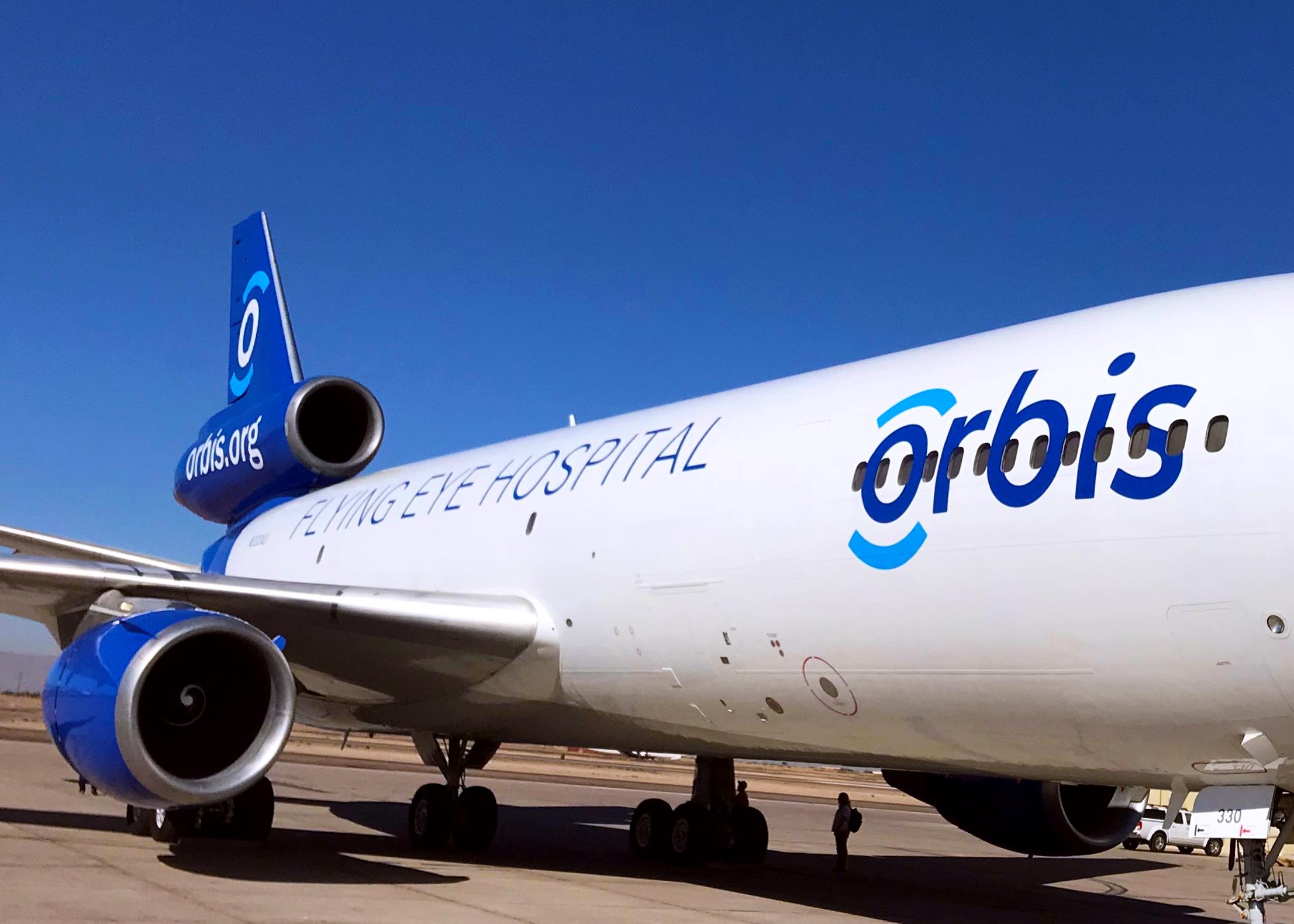
AerSale recently announced that it will service the Flying Eye Hospital at its MRO facility in Goodyear, Arizona. The aircraft will undergo a routine maintenance C check, which is scheduled to be completed by February 5. Charles McDonald, AerSale’s SVP of MRO Services, says that maintenance for the aircraft will be typical despite the medical facilities and equipment on board. If required, the hospital itself is palletized and can be removed. McDonald says once maintenance is complete, the aircraft will be set up on AerSale’s ramp so Orbis can perform scheduled operational checks on equipment.

Orbis says the Flying Eye Hospital has scheduled maintenance checks twice a year in January and July. A checks, which occur every six months, put the aircraft out of service for around 14 days. C checks, which occur every 24 months, put the aircraft out of service between 30 to 40 days. Since Orbis plans all projects with local medical institutions, governments and other NGOs at least a year in advance with multiple on-site assessments ahead of time, scheduled maintenance does not interrupt operations.
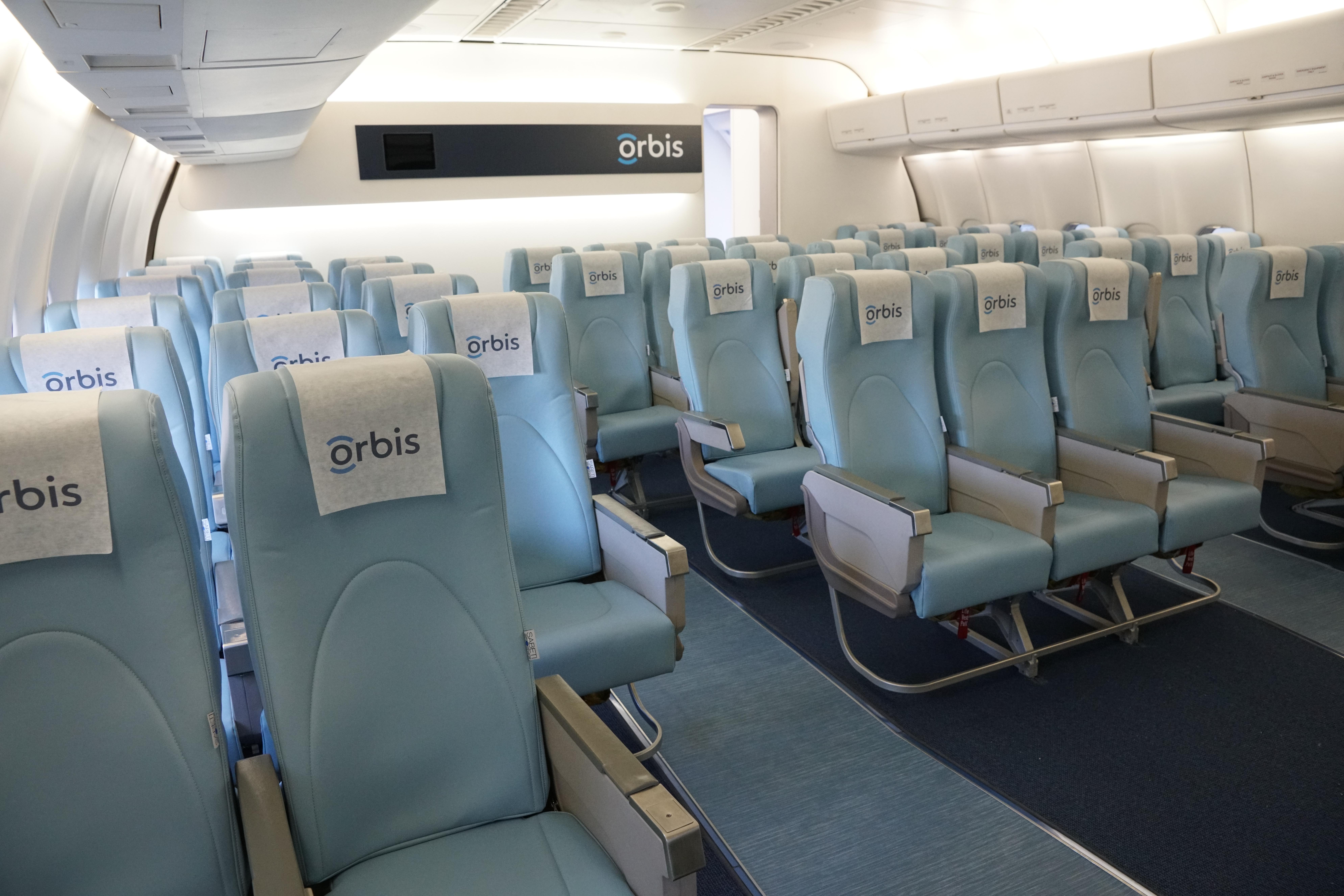
According to Orbis, the Flying Eye Hospital continues to support and strengthen training efforts even when the aircraft is not in-country through hospital-based and online training services. When the Flying Eye Hospital is not engaged directly in medical service, the aircraft is used as an advocate for investing in eye health at goodwill events and air shows. For 2018, Orbis says it looks forward to its first medical training project in Peru, which is scheduled for April. Additional training for the year is planned for Barbados, China, Mongolia and Ethiopia.
The Orbis Flying Eye Hospital has been traveling the world with the mission to end avoidable blindness since 1982. The aircraft flies to low- and middle-income countries to provide specialist training for local doctors and nurses while also performing sight-saving surgeries. As the world's only ophthalmic teaching hospital of its kind, the Flying Eye Hospital's unique setup requires skilled aircraft maintenance to keep things running.
